When Jorge Cheng (陳賢文) set up shop in Barcelona in 2013, he had no idea he was riding a Taiwanese wave.
“There were already eight drinks shops, which we didn’t know initially,” says Cheng, owner of Zenzoo, a Taiwan-style bubble tea drinks store just off Las Ramblas, Barcelona’s iconic thoroughfare. “Three of them turned out to be very close to each other. It just so happened that we found our shop in the area.”
Yet, while local interest had been piqued by these forerunners, naysayers cast doubt over Zenzoo’s focus on its flagship product.
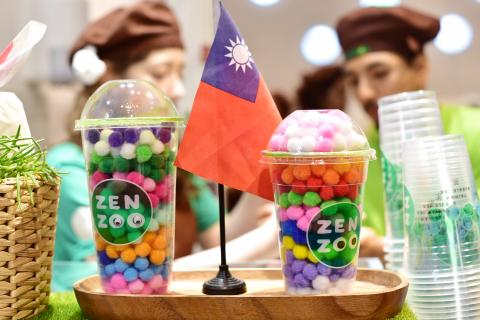
Photo courtesy of Zenzoo
“People were telling us, ‘Tapioca: People are not going to like it,’ and ‘you’ve got make it more westernized,’” Cheng says. “We didn’t buy that.”
The customers did — the drinks that is. Attitudes soon went from bewilderment at the inclusion of what was considered a food item to curiosity and open-armed embrace.
“The zhenzhu (珍珠, pearl) is now our top seller,” says Cheng. “Two kilos of the black pearls sells out in half an hour. Locals are choosing the traditional Taiwanese drinks over more familiar stuff.”
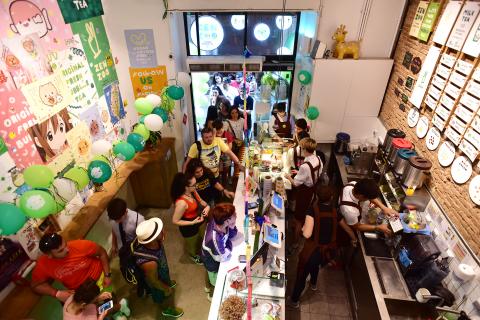
Photo courtesy of Zenzoo
Located amid the grandeur of Barcelona’s Gothic Quarter, Zenzoo fits with its surroundings while retaining elements of a Taiwanese hole-in-the-wall vendor. Cheng credits his graphic designer wife with this successful fusion.
“We didn’t want the regular Chinese plastic bubble tea shop, but something where people passed by and said ‘Wow! What is that?’”
Inside, the walls glow with neon signs, the most eye-catching of which is a multilingual display with the Chinese character for “tea” (茶) above the words “bubble tea” and quiero (Spanish for “I want.”). The final letter of “tea” has been rendered in green plastic, setting it off from the rest of the word, so the sign can also be read as te quiero (“I love you”). Cheng is clearly fond of wordplay hence the quirky rendering of zhenzhu in the shop’s name.
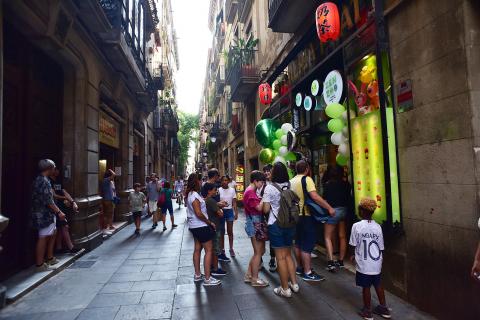
Photo courtesy of Zenzo
Zenzoo has also created its own set of bubble characters, which adorn its products and are redolent of the cutesy stickers on messaging apps such as Line.
“They symbolize our great variety of toppings and dynamic customer base,” says Cheng in flawless marketese.
Not every design element succeeded.
“When we started out we had this long sofa made of [artificial] grass, which resembled Taiwan’s tea terraces. That was really awesome until the local government told us, ‘You’re not allowed to have seats in your establishment.’ That was a shame.”
There was little in Cheng’s professional background to suggest his current career. The son of a Spanish mother and a Taiwanese diplomat who served in Latin America, Miami and Spain, Cheng was born in Madrid before schooling in Taipei.
“It has to do with love,” Cheng says, referring to the decision to quit his job and go into business with a partner that would become his wife.
“We ended up walking around Barcelona and saw our future shop right there. We both fell in love with the space,” he says.
With competition close at hand, Cheng believes that what sets Zenzoo apart is a determination to provide only “the real stuff” to customers.
“I don’t think we’re more authentic than the others, but we definitely take pride in our Taiwanese heritage and the traditional tea making process as opposed to artificial shortcuts,” he says.
Yet he is not averse to experimentation.
“We create new flavors, using local ingredients, and play around with local sweets and toppings. We also come out with new stuff every season and surprise our customers during Halloween and local holidays,” Cheng adds. “But we don’t compromise just to sell more.”
Following the opening of the Barcelona store in 2013, a branch was established in 2017 in Madrid, where Zenzoo cooperated with the Taipei Economic and Cultural Office in Spain — Taiwan’s de facto embassy — to offer drinks for the Double Ten Day celebrations. The following year, Zenzoo expanded to the western city of Salamanca, and a further outlet opens this month in an, as yet, undisclosed overseas location.
Not everyone is taken by the bubble tea phenomenon, but Cheng remains unfazed.
“People who come to me and say, ‘What is this? This is weird. That’s artificial,’ are probably not going to be my customers,” Cheng says. Instead, he sees his market as the more adventurous types. “In Spanish we say despertar — to awake,” he says. “And that’s what we want, to awake those exotic flavors that we can bring to the local culture. That’s what it’s all about.”
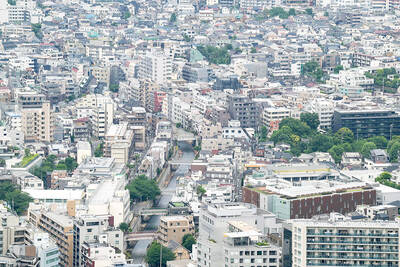
The canonical shot of an East Asian city is a night skyline studded with towering apartment and office buildings, bright with neon and plastic signage, a landscape of energy and modernity. Another classic image is the same city seen from above, in which identical apartment towers march across the city, spilling out over nearby geography, like stylized soldiers colonizing new territory in a board game. Densely populated dynamic conurbations of money, technological innovation and convenience, it is hard to see the cities of East Asia as what they truly are: necropolises. Why is this? The East Asian development model, with
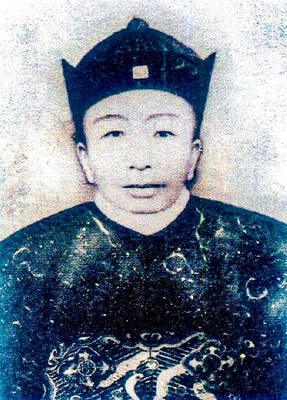
June 16 to June 22 The following flyer appeared on the streets of Hsinchu on June 12, 1895: “Taipei has already fallen to the Japanese barbarians, who have brought great misery to our land and people. We heard that the Japanese occupiers will tax our gardens, our houses, our bodies, and even our chickens, dogs, cows and pigs. They wear their hair wild, carve their teeth, tattoo their foreheads, wear strange clothes and speak a strange language. How can we be ruled by such people?” Posted by civilian militia leader Wu Tang-hsing (吳湯興), it was a call to arms to retake
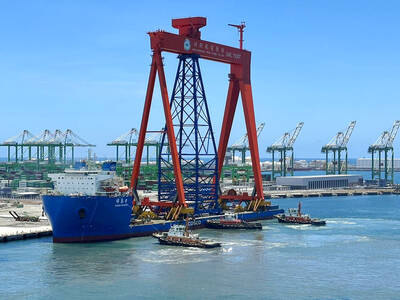
This is a deeply unsettling period in Taiwan. Uncertainties are everywhere while everyone waits for a small army of other shoes to drop on nearly every front. During challenging times, interesting political changes can happen, yet all three major political parties are beset with scandals, strife and self-inflicted wounds. As the ruling party, the Democratic Progressive Party (DPP) is held accountable for not only the challenges to the party, but also the nation. Taiwan is geopolitically and economically under threat. Domestically, the administration is under siege by the opposition-controlled legislature and growing discontent with what opponents characterize as arrogant, autocratic
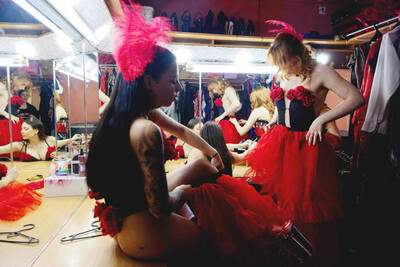
When Lisa, 20, laces into her ultra-high heels for her shift at a strip club in Ukraine’s Kharkiv, she knows that aside from dancing, she will have to comfort traumatized soldiers. Since Russia’s 2022 invasion, exhausted troops are the main clientele of the Flash Dancers club in the center of the northeastern city, just 20 kilometers from Russian forces. For some customers, it provides an “escape” from the war, said Valerya Zavatska — a 25-year-old law graduate who runs the club with her mother, an ex-dancer. But many are not there just for the show. They “want to talk about what hurts,” she